What Is Basil Used For In Cooking

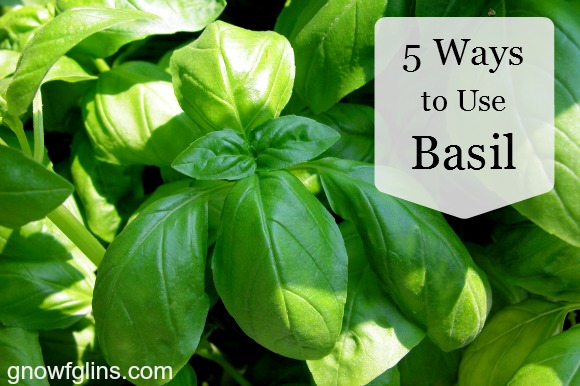
Basil is a wonderful herb that flourishes in summer months. Besides being delicious, basil offers many health benefits:
- Basil is rich in antioxidants
- Boosts mood (even the scent of basil is thought to be uplifting)
- Basil has anti-inflammatory properties (which help treat digestive disorders and other inflammation-based ailments, such as headaches)
- Holy Basil is an adaptogen, thus it aids the body when dealing with stress and change
- Basil supports the immune system
Isn't it wonderful how the food we eat can enhance our health and heal the body?
With all these benefits, basil is something we want on our dinner plates often. The great thing is, it's easy to add to many dishes.
Including basil in your meals is not just tasty, it's culinary medicine!
Following are five simple ways to use basil in daily life and cooking. I'm sure there are many more possibilities. Please share your favorite uses for basil in the comments!
1. Make Basil Butter
Herbal butters are a great way to add flavor (and interest) to meals and can be made with a variety of herbs.
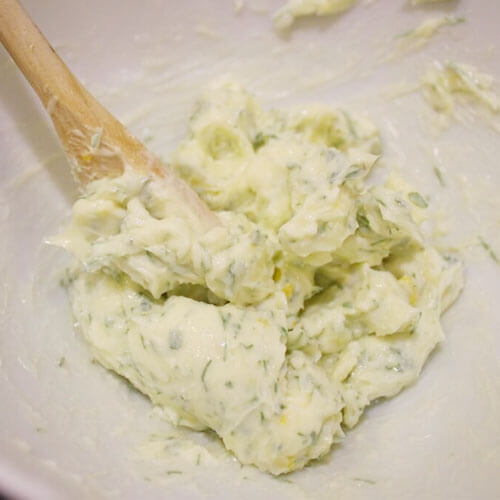
Basil Butter
Basil is a great choice for herbal butter since it's flavor pairs well with many meats and vegetables. Yields approximately one pound of basil butter.
- 1 pound butter room temperature
- 1-1/2 cups basil destemmed and finely chopped
-
In a large bowl cream the butter with a wooden spoon or a handheld mixer on low speed.
-
Add chopped basil and stir with a wooden spoon to distribute throughout the butter.
-
Place basil butter in a covered butter crock or form butter into a log and wrap in plastic wrap before refrigerating.
Use basil butter as a spread on breads and rolls, to saute vegetables or meat, cook eggs, and flavor soups.
Make cultured basil butter starting with your own homemade cultured butter.
2. Make Pesto
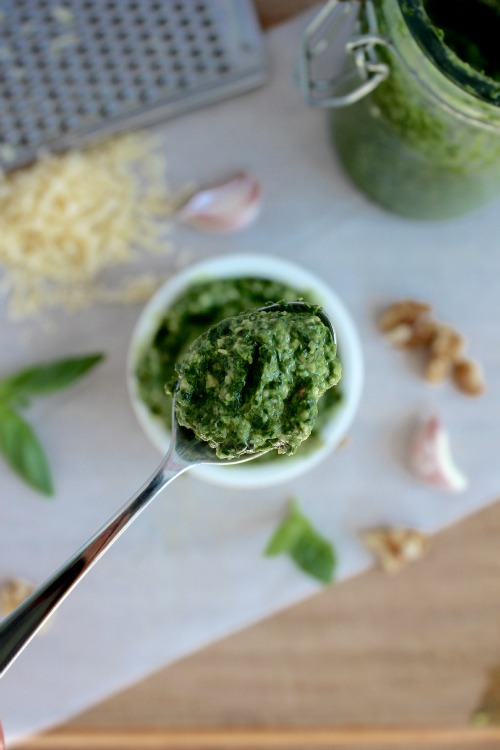
Roasted Garlic and Walnut Pesto @ BetterwithCake.com
Pesto is a fantastic way to use a lot of basil at once and is an effective method of consuming large amounts of this beneficial herb.
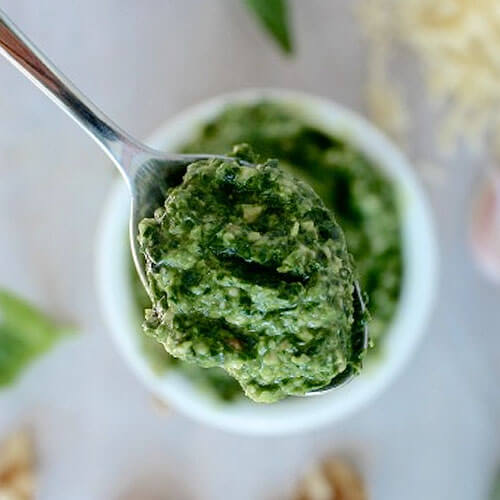
Fresh Basil Pesto
Pesto is a breeze to make and requires little more than placing ingredients in a food processor and blending until smooth.
Yields 2 cups. Adapted from The Backyard Homestead.
- 2 cups fresh basil leaves
- 1 garlic clove
- pinch sea salt
- 1/2 cup Parmesan cheese grated
- 1/2 cup extra virgin olive oil
- 1/3 cup pine nuts
-
Place basil leaves, garlic, and salt in a food processor.
-
Pulse until a thick paste is formed.
-
Add the Parmesan cheese and blend to incorporate.
-
With the food processor still running, pour in the olive oil in a thin, steady stream.
-
Add the pine nuts and process until smooth.
If you do not wish to use pine nuts, walnuts may be substituted, as seen in this delicious roasted garlic and walnut pesto (pictured above).
Pesto is superb with pasta, but it is equally wonderful with many other foods; try adding a few teaspoons of pesto to scrambled eggs or omelets, salad dressings, egg salad, or use as a spread in your favorite sandwich.
3. Include in Everyday Dishes, Such as Salads and Sandwiches
Make simple salads more interesting by adding a handful of fresh basil leaves. It's also easy to give sandwiches a boost by tucking in a leaf or two instead of (or as well as) lettuce. Basil can also be included in soups, casseroles, sauces (like pasta sauce), stir-fries, and used as a pizza topping.
4. Make Basil Tea
I had not thought to make tea out of basil until I came across a recipe for Hot Holy Basil Tea in a favorite book: Herbal Treasures. Making tea out of basil is a great way to calm digestive upset and receive the benefits basil provides as an adaptogen.
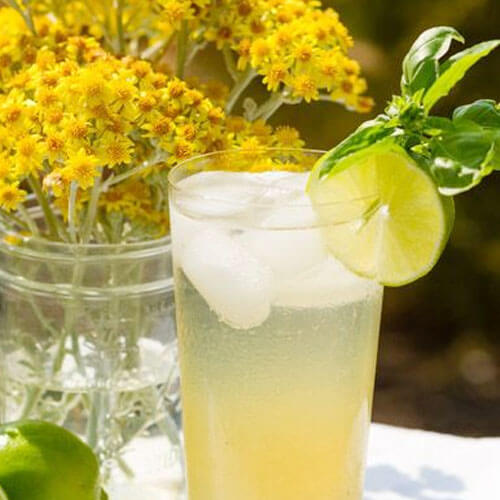
Basil Tea
When making basil tea it is important to use Holy Basil instead of common basil since it is the variety that contains adaptogens.
- 6 to 8 sprigs Holy Basil
- 6 cups pure water
-
Fill a pot with 6 cups of water and bring to the boil.
-
Once boiling, turn off the heat and add 6 to 8 sprigs of basil.
-
Gently poke the basil with a spoon so that it is under the water and not just floating on top (if it rises back to the top, that's fine).
-
Cover and leave to steep for about ten minutes.
-
After the ten minutes has passed, carefully remove the basil leaves with tongs, or strain, and pour tea into mugs.
5. Make an Herbal Vinegar
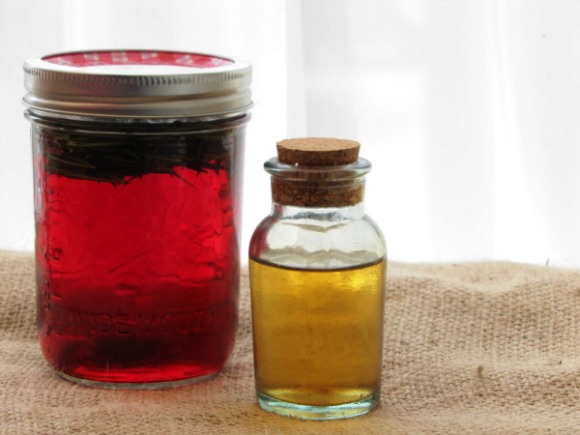
Making herbal vinegar is simple, just place basil leaves in a clean bottle and pour vinegar over the herbs (be sure they are completely covered). Close lid tightly and leave to sit for a few weeks. Once the vinegar is ready, strain out the herbs and save the basil-infused vinegar in an airtight jar or bottle. For more complete instructions, see this post: How to make (and use) herbal vinegar.
Basil vinegar may be added to salad dressings and soups, or drizzled over fish or chicken; it may also be added to a warm bath to aid in blood circulation and invigorate and relax the body. (When making basil vinegar for bathing purposes, feel free to use white vinegar or apple cider vinegar. Save the white wine vinegar for culinary use!) I also like to include dried basil in bath bags and bath tea!
What's your favorite way to use basil?
We only recommend products and services we wholeheartedly endorse. This post may contain special links through which we earn a small commission if you make a purchase (though your price is the same).
What Is Basil Used For In Cooking
Source: https://traditionalcookingschool.com/food-preparation/recipes/5-ways-to-use-basil/
Posted by: nelsondroutich.blogspot.com

0 Response to "What Is Basil Used For In Cooking"
Post a Comment